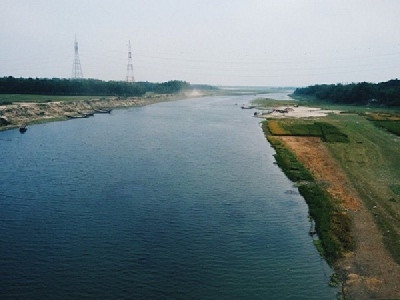
Posted on January 16, 2018
By Ajit Patowary, The Assam Tribune
The preliminary survey, conducted by the State’s Water Resources Department (WRD) on the entire course of the Brahmaputra in the State for the purpose of dredging its bed and building two expressways by utilizing the dredged materials, has found that an area of around 2,307 sq km could be reclaimed by dredging the riverbed.The Brahmaputra carries nearly 800 million tonnes of sediment every year while passing through Assam. With a sediment yield of 1,128 tons per sq km per year at Bahadurabad in Bangladesh, the Brahmaputra is regarded as the second highest sediment transporting river on Earth.
It needs mention here that the Union and the State governments have decided on October 24, 2016 to explore the feasibility of converting this river into a modern water and land communication system, inclusive of sustainable control of flood and erosion. This was followed by launching of the preliminary survey for the purpose by the WRD. Chief Minister Sarbananda Sonowal kicked off this survey on January 24, 2017, by laying a bench mark pillar in Dibrugarh.
The concept paper, prepared by WRD engineers after conducting the survey, said the central length of the river is 640 km and the length of the expressway proposed on its north bank would be 657 km, while that of the expressway proposed on its south bank would be 720 km. To develop these expressways, around 880 million cubic metres of dredged materials would be required.
These expressways will require 90 guide bunds on the outfalls of the tributaries and sub-tributaries with a total length of 208.21 km. Besides, 42 bridges, with a total length of 20.34 km, 17 access roads with a total length of 138 km and 1,278 culverts would be required for these highways. For the construction of the expressways, expertise from all over the world should be pulled in.
The concept paper said restricting the width of the Brahmaputra within 2 km, throughout its length in the State, would be possible if its bed is properly dredged using modern technology. This restricted width of the river would in no way affect its discharge capacity. This is evident in its restricted reaches in Tezpur and Guwahati, where the river is around 1 km wide on an average.
The WRD survey, conducted under the guidance of its Additional Chief Engineer Topodhan Das, covered the areas within 5 km from the bank line towards the countryside and 2 km beyond the proposed alignment of the expressways towards the riverside.
Source: The Assam Tribune





